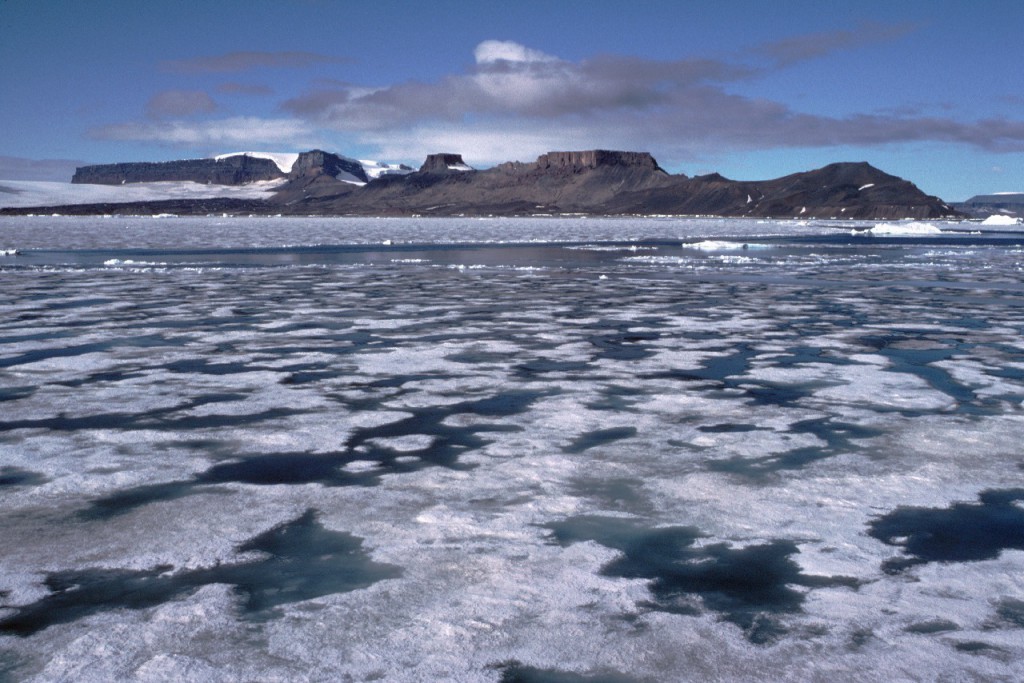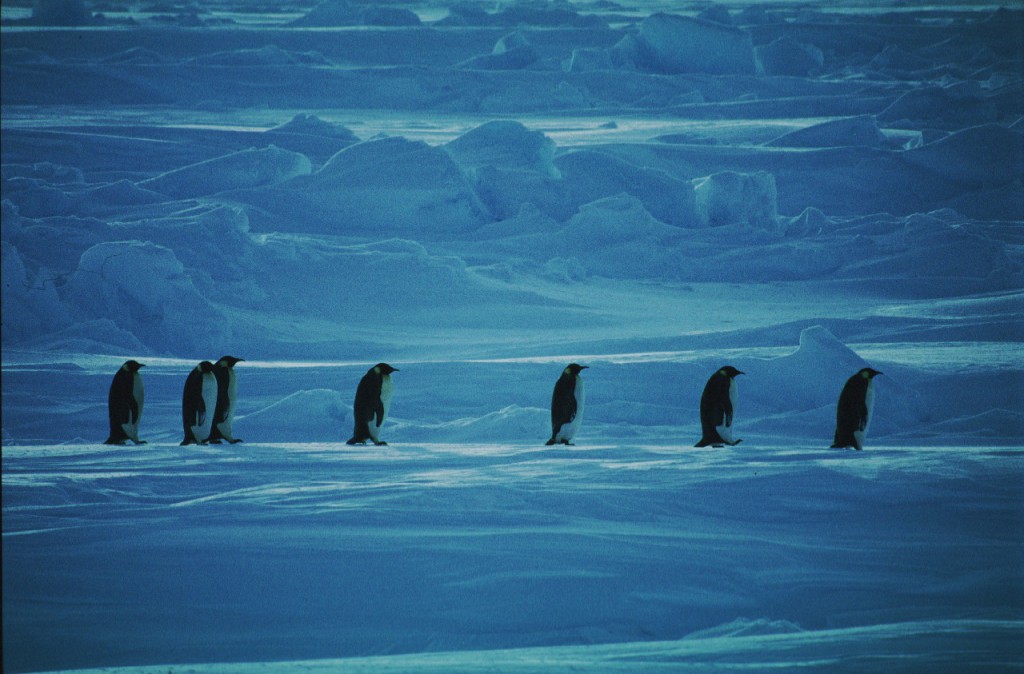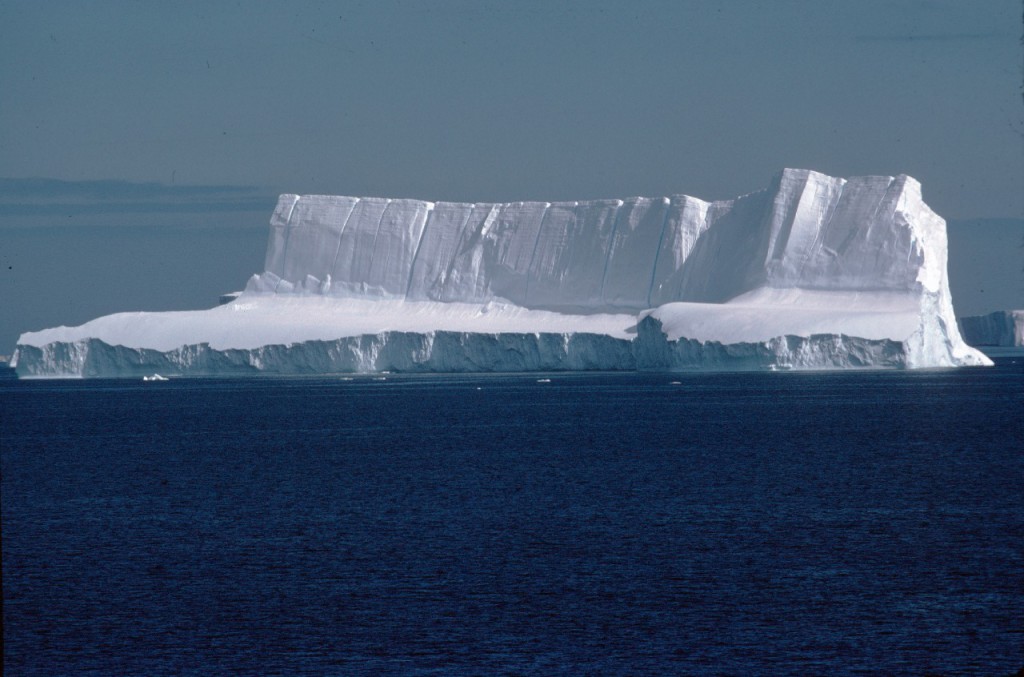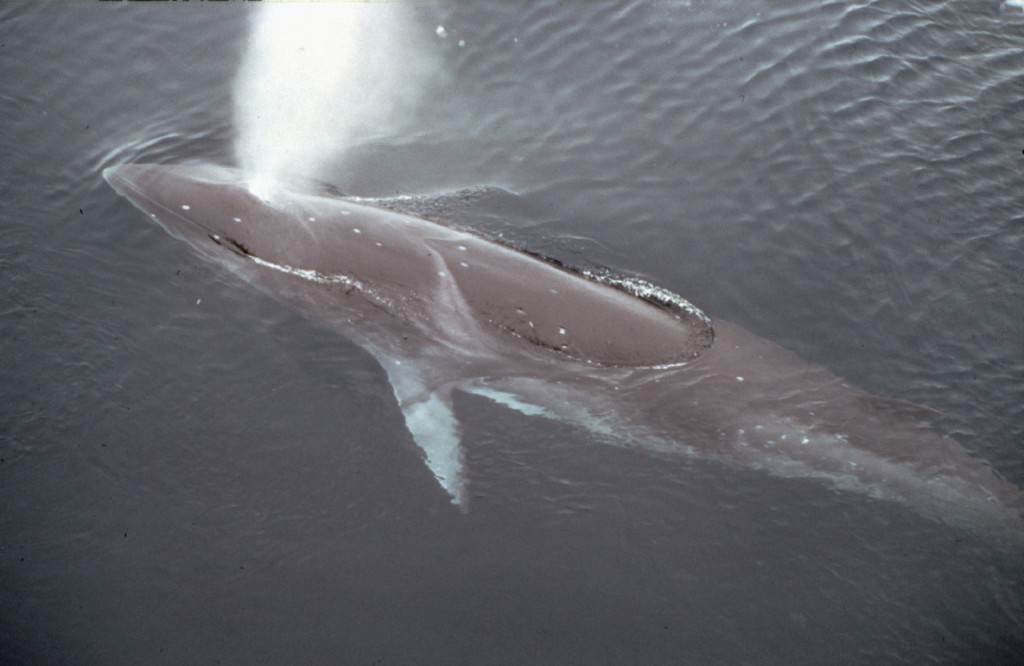Week 3: Biological surveys in the eastern Weddell Sea
27 February, 2012 RRS James Clark Ross
Jen Jackson (British Antarctic Survey)
Hello from the eastern Weddell Sea! On Sunday 19th February we reached the most southerly point of our expedition. At 77.36 degrees south we had made it as far south into the Weddell Sea as the sea ice would allow us to go – only 30 nautical miles short of the James Clark Ross southern record for this area. On the 17th we began to break into areas of sea ice. The James Clark Ross has a special ice heeling system which makes the ship roll from side to side, helping to ease our passage through the ice. We travel slowly through and stop frequently as the captain searches for a route through the existing cracks, targeting the weaker areas where the ice is more likely to break. The best place to watch this is from the very front of the ship, where you can peer over the prow and watch the action happening directly below.

The sea surface temperature is now around minus 1.5°C. At this temperature it is so cold that the sea changes in consistency. Ice crystals under the surface dampen the waves giving the sea around us a completely glossy and smooth appearance. Despite the complete lack of haze, it’s often hard to distinguish the sea and sky at the horizon. Minke whales patrol the sea ice; rising in the small pools that form where the ice fractures and separates. The groups of flapping Adelie penguins from the last few days have now been replaced by calm clusters of emperor penguins, craning at us from the sea ice.



From the 19th we have been slowly tracking north along the Antarctic coastal shelf and into deeper waters, collecting sea floor animals from 300 to over 2,000 metres deep. Each ‘sampling station’ consists of three Agassiz trawls and one epibenthic sledge, which were described by Mel last week. Life on the Antarctic sea floor is incredibly patchy, so we get a much fairer representation of it with three repeats. In the evenings we can review the high quality camera footage of the sledge and get a good look at the habitat we are collecting animals from.
Sea life at our most southerly site included loads and loads of sea cucumbers. We collected well over 200 of these little fellows. When they come out of the sea in the net they look like slime and sludge but are beautiful in the water (at least I think so!). Mel Mackenzie, our sea cucumber expert from Museum Victoria in Australia, was really happy and was kept very busy sorting and identifying. The most exciting part was that we learned a lot about the biology of these little animals from our underwater video camera. We collected excellent footage of a whole ‘city’ of sea cucumbers, each one sitting in a little pit it presumably had dug into the mud. It is wonderful to see the animals in action and we have learned some new things about sea cucumber behaviour in the Southern Ocean.
Our first day of sampling at 2,050 metres yielded an amazing diversity of deep-sea life, from countless worm tubes to loads of tiny sea spiders which clung to the nets on the way up. We spent a fair bit of time picking them off the nets and deck with forceps. The glamour of biology!